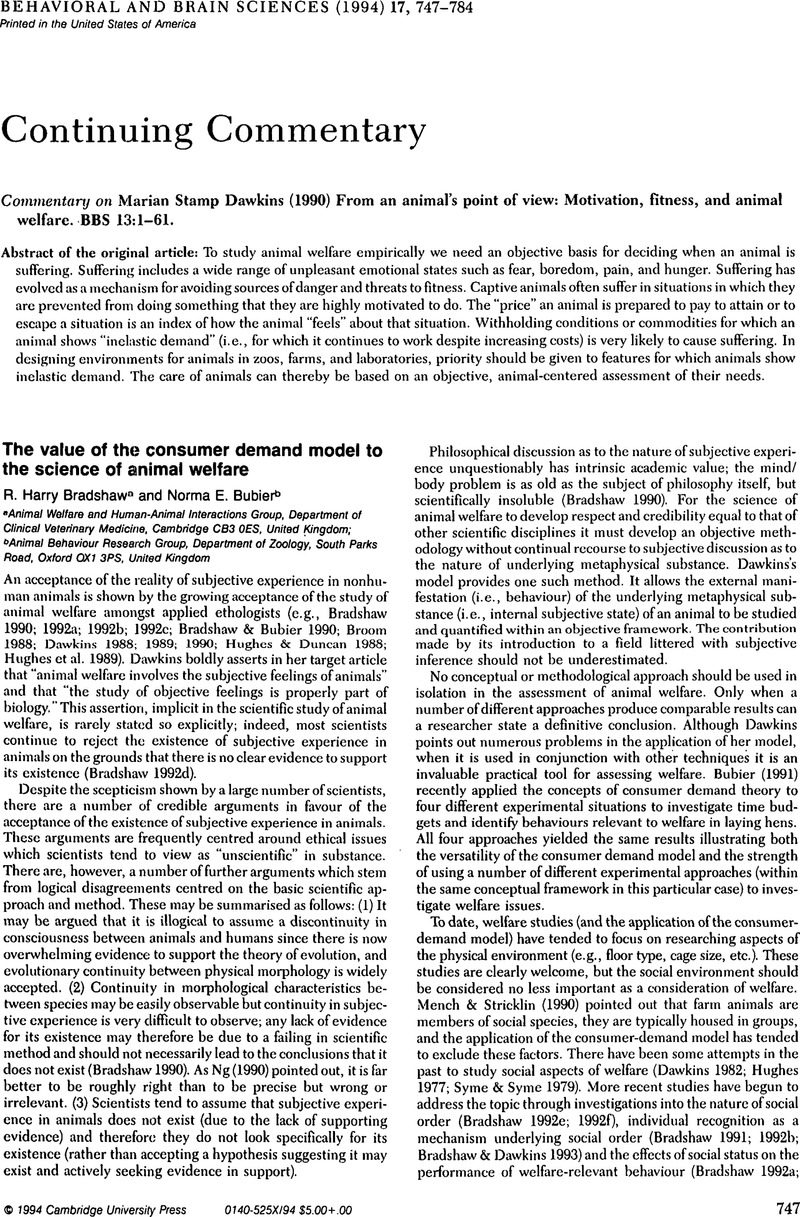Thorpe, W. (
1965) The assessment of pain and distress in animals. In:
Report of the technical committee to the enquiry into the welfare of animals kept under intensive livestock systems. F. W. R. Brambell (Chairman). Her
Majesty's Stationery Office,
London. [MKW] '
Google Scholar 